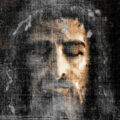
This week: Fr. Muir gives the background on the corrected translation of Mass. A young girl makes a big impact. How congress has suffered in the downturn. 50 people are asked 1 question. Time magazine lobs a grenade at the Catholic Church, just because they can. Fowl, mindless act of criminality in Cornwall. A cat smarter than us.
The Life Teen folks have produced an informative video on the corrected translation of Mass. Father John Muir narrates. This English translation will be used everywhere beginning this Advent.

Rachel Beckwith wrote: “On June 12th 2011, I’m turning 9. I found out that millions of people don’t live to see their 5th birthday. And why? Because they didn’t have access to clean, safe water so I’m celebrating my birthday like never before. I’m asking from everyone I know to donate to my campaign instead of gifts for my birthday.” A birthday charity wish page was setup. Her goal was to raise $300, she fell a little short, but still raised $220.
On July 20, only 38 days after her birthday, Rachel and her family were in a terrible accident. Rachel would not survive, but her birthday wish lives on reaching almost $1,000,000. Her legacy will bring clean drinking water to over 47,000 people.
Thanks to Mary DeTurris Poust for spotting this story.
“Amen, I say to you, unless you turn and become like children, you will not enter the kingdom of heaven. Whoever humbles himself like this child is the greatest in the kingdom of heaven. And whoever receives one child such as this in my name receives me.”
Downgraded credit worthiness, record public debt, unemployment, foreclosures and general government dysfunction. Is this the change we can believe in? Well, at least those in congress are suffering too. Right?
There is an interesting genre of videos on YouTube that ask 50 people 1 question, at locations around the world. Here, people in Galway, Ireland are asked about their biggest regret:
“I came so that they might have life and have it more abundantly.” John 10:10
Time magazine assistant managing editor Bill Saporito recently published a piece having nothing to do with the Church or protection of children. Yet, he opened it as follows:
Having Standard & Poor’s downgrade the creditworthiness of the U.S., and warn the country about further downgrades, is a little like having the Catholic Church lecture Scout leaders on the proper behavior toward boys.
Time Magazine
The absolute IRONY is that the Catholic Church in the US is today probably the best example of comprehensive, enforced policies for the protection of children. Children in the Boy Scouts, Saporito’s church (if he has one), and Saporito’s local public school would be much safer if they followed our programs. That of course, was not his point. His point was simply to smear the Church simply because he has the platform to do so.
Do you still subscribe to Time?
Mindless criminality in England is not limited to people:
Frida Kahio from Berlin wins 2 out of 3 times in a shell game:
Some random thoughts or bits of information are worthy of sharing but don’t warrant their own full post. This idea was started by Jennifer Fulwiler at Conversion Diary to address this blogging need. So, some Fridays I too participate when I have accumulated 7 worthy items. Thank you Jen for hosting this project!




















